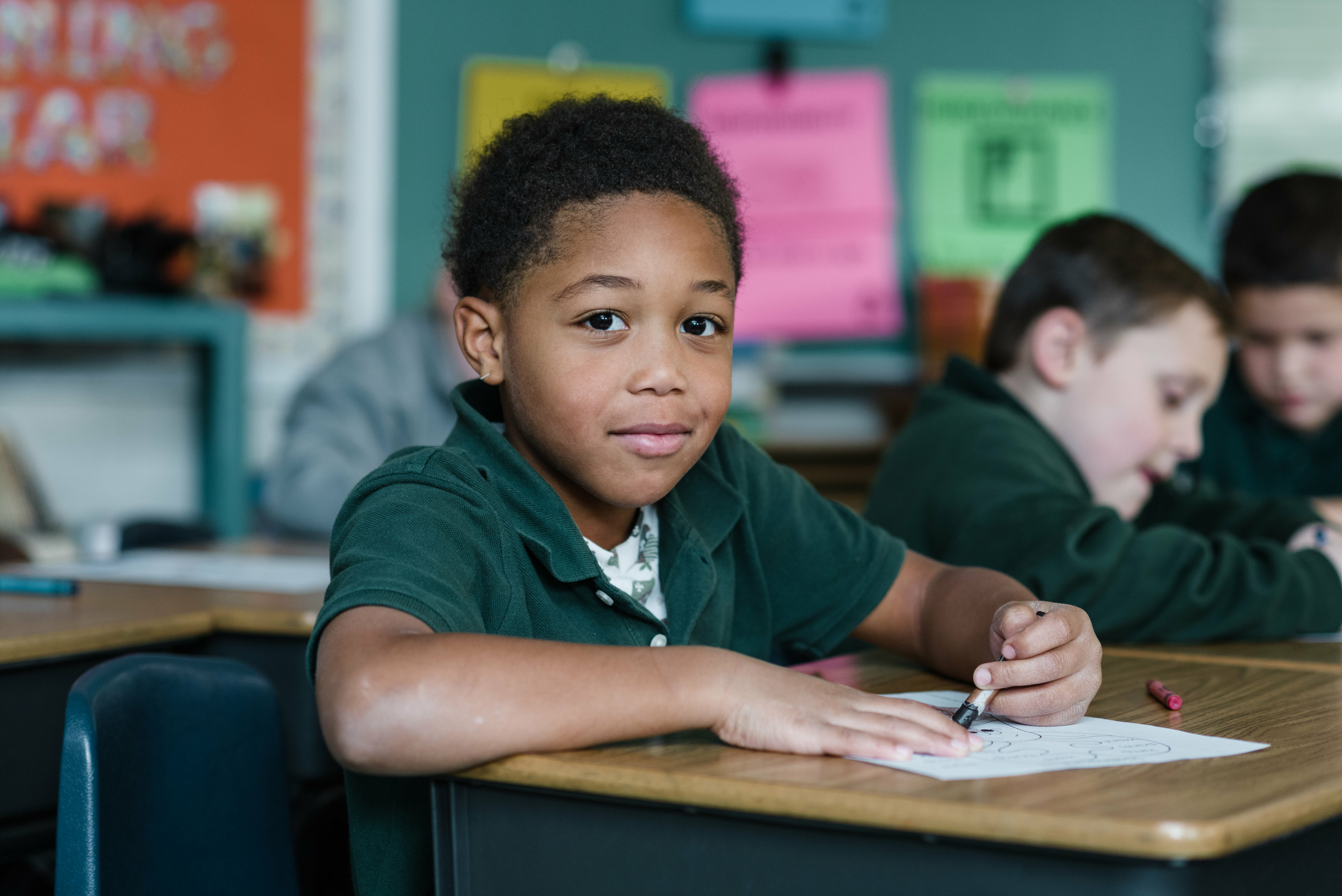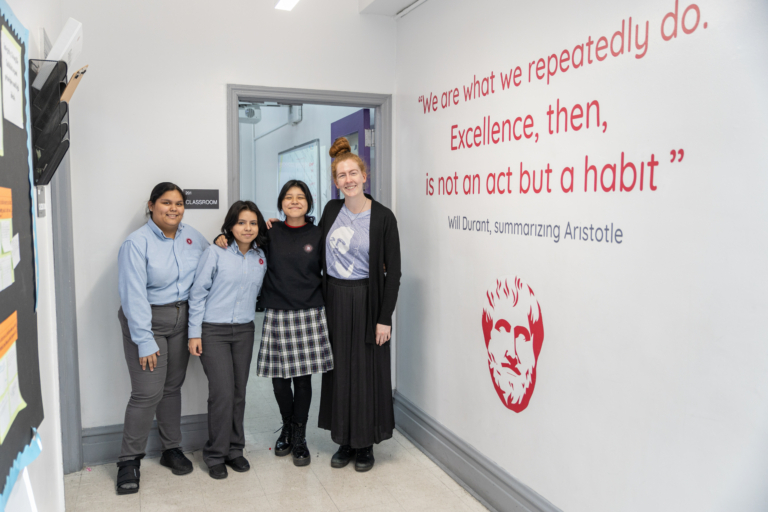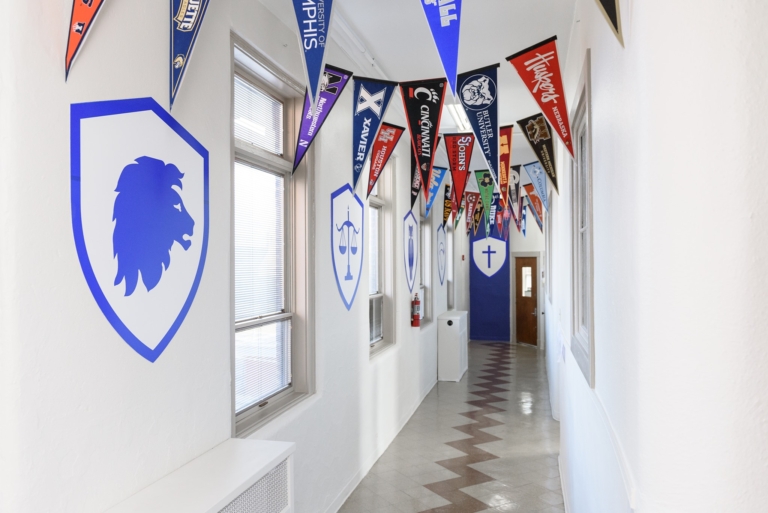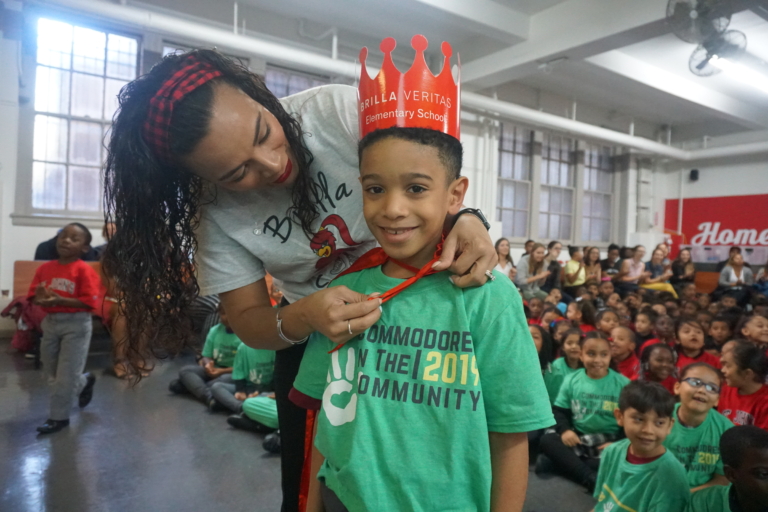What does a capable teacher do when every scholar in her classroom requires differentiated instruction?
“Jake is an example of a scholar who, before Seton came, I would not have understood how urgent I needed to be when I worked with him,” recalls Colleen McKenzie, Jake’s second-grade teacher and now principal at DePaul Catholic School in Philadelphia, Pennsylvania. “Jake came to us from a failing school down the street. He needed and deserved a school with high expectations and consistency.”
DePaul serves a scholar population of whom seventy-six percent qualify for the federal free or reduced lunch program, a widely used indicator of scholar poverty. When DePaul partnered with Seton Education Partners to create innovative new ways to educate scholars in the Catholic faith, McKenzie knew right away that she could leverage the resources and mindset Seton provided to reach scholars like Jake.
The goal of the partnership was to deploy a blended learning model that has proven successful in nine major cities— Los Angeles, San Francisco, Milwaukee, Chicago, Dayton, Cincinnati, Cleveland, Philadelphia, and New Orleans—through its combination of small-group instruction and personalized software-based learning. Seton scholars in those cities outpaced their peers in high-performing charter schools in year-over-year academic growth.
“I was sold,” McKenzie says. “I knew that what I was doing was OK, but I knew it could be better. When we started working with Seton, I was trying to meet all my scholar’s needs through differentiated instruction. It was hard. My scholars’ learning levels were all over the place, and I was spending much of my planning time trying to figure out how to reach them all. I was overwhelmed trying to do everything that I could to help.”
As for Jake: “He started his second-grade year at a beginning kindergarten level. He was also navigating some challenges at home and needed a consistent classroom environment where he felt supported in order to reach his potential.”
In McKenzie’s previously structured classroom—using the “traditional” model of educational delivery—she admits she may not have recognized Jake’s unique needs because she would have lacked the data that showcased where exactly he needed support. Despite being aware that many of his behavioral concerns likely stemmed from his academic frustrations, she would not have had the tools to identify and address the specific challenges Jake faced.
Seton gave her those tools. Through real-time assessment data on scholar progress and software that adapts and changes pace to ensure a scholar’s specific needs on a skill or topic are addressed, Seton’s blended learning model opened McKenzie’s eyes to what Jake knew, what he didn’t know, and what he had completely mastered with up-to-the-minute reports in reading and math.
“We just didn’t have the right level of information about our scholars,” she says. “Seton’s model gives you more information about where your scholars are at immediately, and it helps you diagnose your own practice so you can tailor and keep tailoring your instruction to meet their needs.”
McKenzie was not alone at DePaul in seeking out this sort of game-changing resource.
“We had a lot of teachers who believed in the work that we were doing,” she says. “They were committed to that work. But we didn’t have the resources or information to improve our practice. This was the perfect answer to pushing us to be more data-driven. To think that we were operating in this way of just teaching like usual, and not really knowing how our scholars were doing until we got the results back [from our standardized tests] in April and May. . . by that time we couldn’t do anything with the data.”
Jake was not alone in needing the personalized instruction. There are many scholars around the country who face similar challenges that prevent them from fully engaging in the classroom.
“Five years ago, even though we were making progress, we were just another traditional school,” McKenzie continues. “It was old, just like our textbooks. Our instructional techniques were the same as those used in the ’70s and ’80s, probably the same age as the books we had. But with that, we had scholars coming to us in third- or fourth-grade and weren’t performing on grade level. Blended learning has helped with that. It has lifted the burden from the teachers who are helping scholars walking through the door two or three levels behind.”
Although she is no longer in the classroom, McKenzie reflects on a potential return to teaching: “If I ever went back into the classroom to teach, I would never go back without blended learning.”
As for Jake, “by the end of his second-grade year,” she says, “he was reading at an advanced third-grade level.”
Now in high school, Jake is “doing extremely well,” and received “a scholarship to a local Catholic high school. His future is looking very bright.”
Jake is a Seton success story. For more stories about our joyful scholars, sign up for our monthly newsletter, Anchored & Underway.



